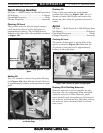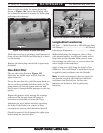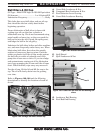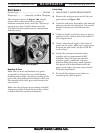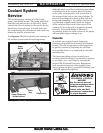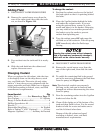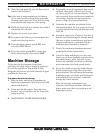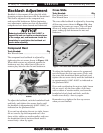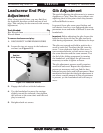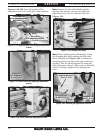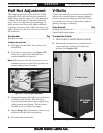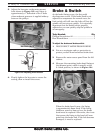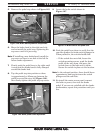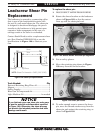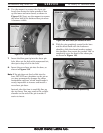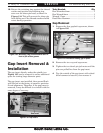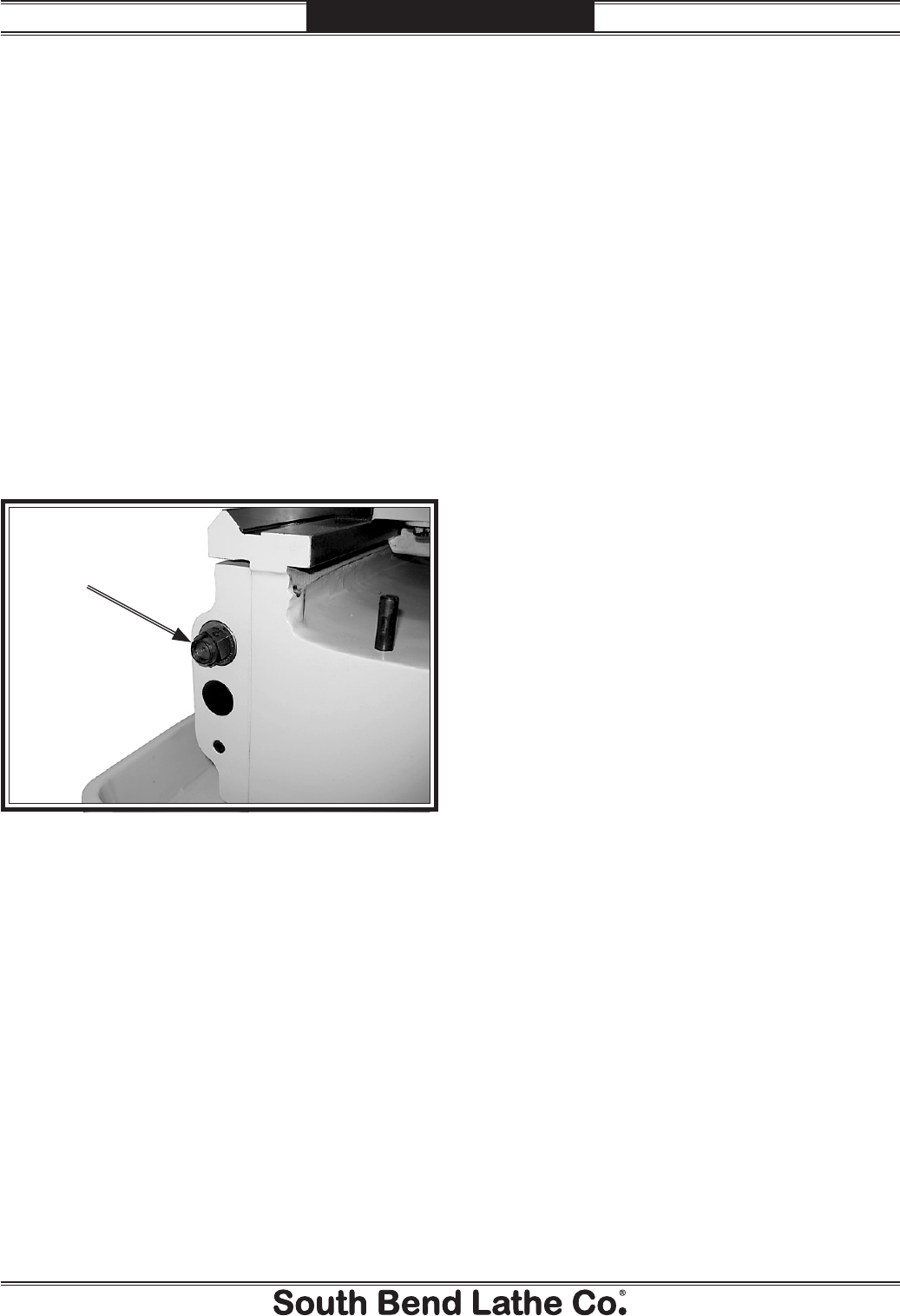
For Machines Mfg. Since 5/11 13" Heavy 13
®
Gearhead Lathe
-75-
SERVICE
Gib Adjustment
The goal of adjusting the gib screws is to remove
sloppiness or "play" from the ways without over-
adjusting them to the point where they become
stiff and difficult to move.
In general, loose gibs cause poor finishes and
tool chatter; however, over-tightened gibs cause
premature wear and make it difficult to turn the
handwheels.
Important: Before adjusting the gibs, loosen the
locks for the device so that the gibs can freely
slide during adjustment, then lubricate the ways.
The gibs are tapered and held in position by a
screw at each end. To adjust the gib, turn one
screw
1
⁄4 turn clockwise and the other screw
1
⁄4
turn counterclockwise, so both screws move in
the same direction and the same amount. Test
the feel of the sliding component by turning
the handwheel, and adjust the gib screws as
necessary to make it tighter or looser.
The gib adjustment process usually requires
some trial-and-error. Repeat the adjustment
process as necessary until you find the best
balance between loose and stiff movement. Most
machinists find that the ideal gib adjustment is
one where a small amount of drag or resistance
is present, yet the handwheels are still easy to
move.
After a long period of time, you may find that
the leadscrew develops a small amount of end
play. This end play can be removed with an easy
adjustment.
Tools Needed: Qty
Hex Wrench 3mm .................................................1
Wrench 24mm ......................................................1
To remove leadscrew end play:
1. DISCONNECT LATHE FROM POWER!
2. Loosen the two set screws in the leadscrew
end nut (see Figure 115).
Leadscrew End Play
Adjustment
3. Engage the half nut with the leadscrew.
4. Use the handwheel to move the carriage
slightly toward the tailstock, then tighten
the end nut at the same time until the end
play is removed.
5. Retighten both set screws.
Figure 115. Leadscrew end nut.
End Nut
& Set Screws



